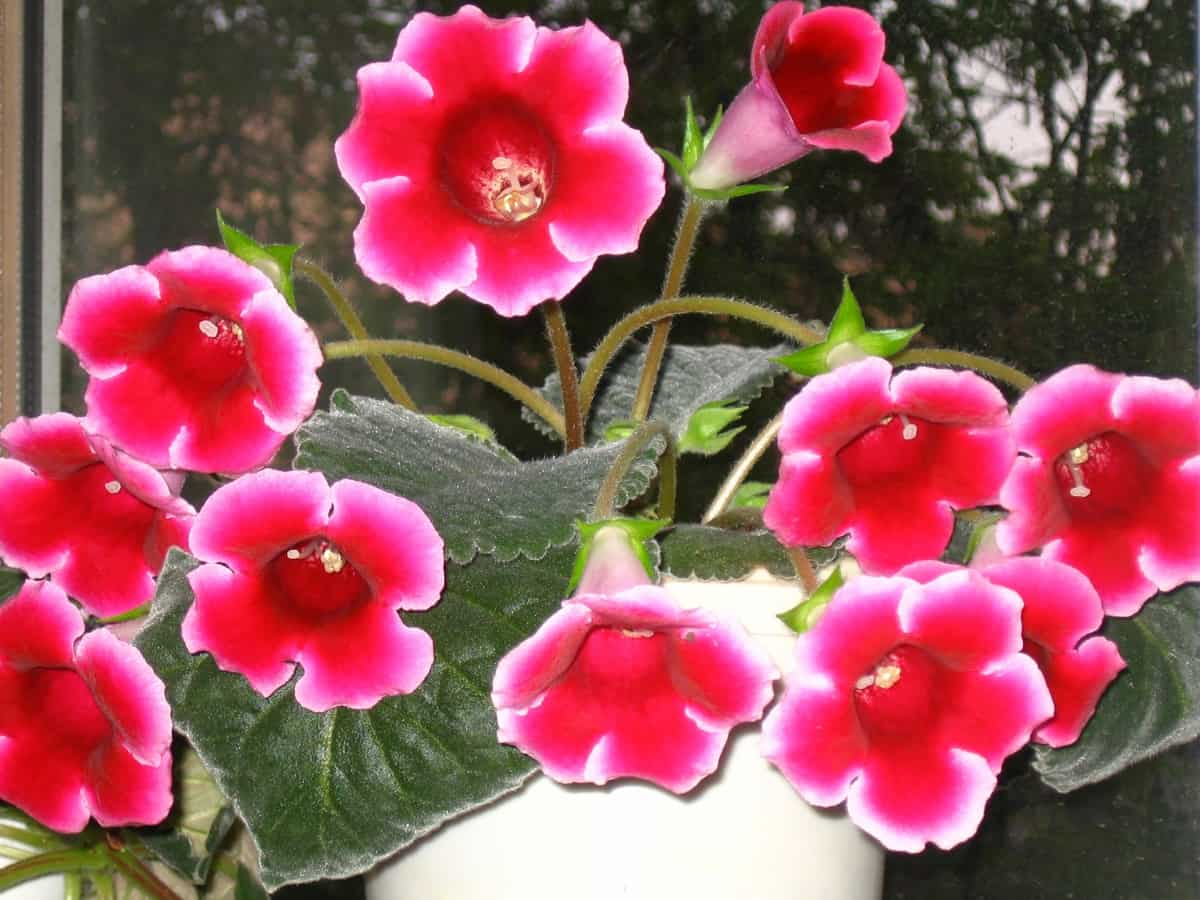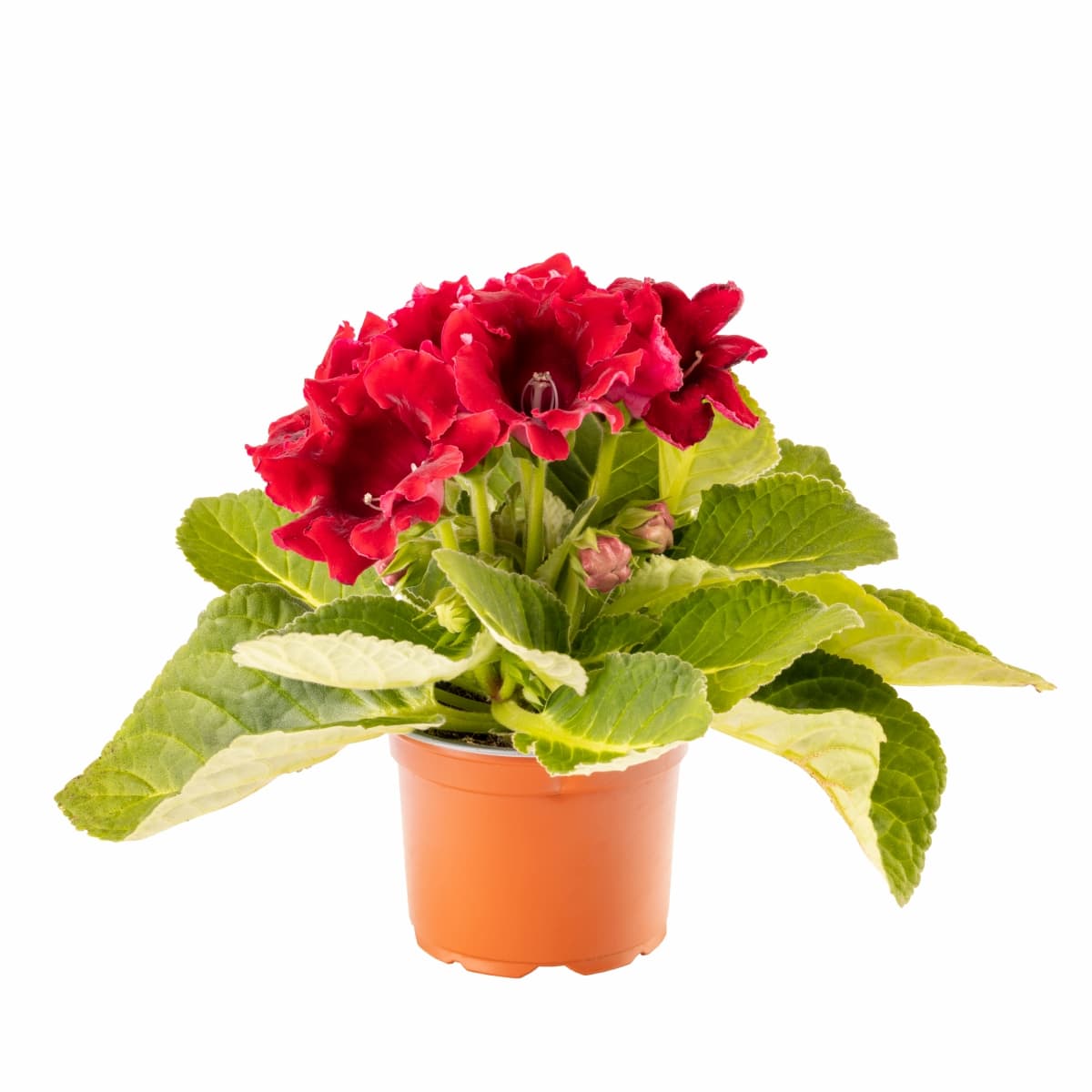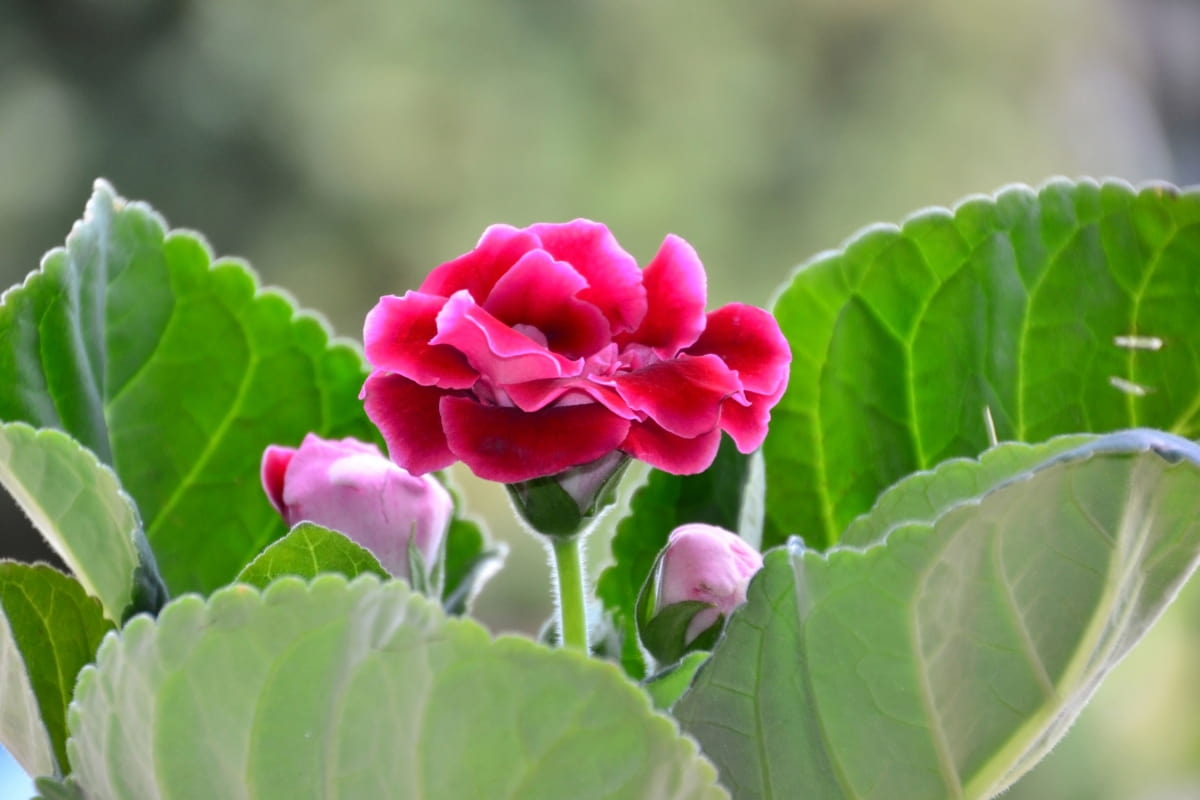Gloxinia plants are known for their beautiful and vibrant blooms. Gloxinia plants are known for their bell-shaped flowers in various colors, including purple, pink, white, and red. Growing and caring for Gloxinia plants can be a rewarding experience that brings beauty to your home or garden.

Growing and Caring for Gloxinia Plants
Soil Requirement for Growing Gloxinia Plants
Gloxinia plants prefer well-draining soil that is rich in organic matter. A good potting mix with peat moss, perlite, and vermiculite can give these flowering plants ideal growth conditions. Use a well-draining, nutrient-rich potting mix with a pH between 5.5 and 6.0.
Optimal Lighting and Temperature Conditions for Gloxinia
- Gloxinia plants require optimal lighting and temperature conditions to thrive. As a tropical plants, they prefer bright, indirect light filtered by sheer curtains or blinds. Direct sunlight can scorch the leaves of Gloxinia plants and cause permanent damage.
- Temperature is another crucial factor in Gloxinia careIn addition to proper lighting and temperature conditions, regular maintenance such as watering and fertilizing will help keep your Gloxinia healthy and vibrant all year round.
Propagating Gloxinia: A Guide to Multiplying Your Plants
- The propagation method allows you to take a healthy leaf and grow an entirely new plant. Choose a healthy mature leaf with no damage or disease. Cut the stem at the leaf’s base, ensuring it’s 1-2 inches long. Dip this end in rooting hormone powder and place it in moist soil.
- Covering the pot with plastic wrap can create humidity that promotes root growth. Keep your cutting in indirect light and ensure the soil stays moist throughout this process.
- After about four weeks, roots should begin to form, indicating successful propagation. Once you see signs of new growth above ground, remove any plastic coverings and gradually expose your new plant to more sunlight. Propagation may seem intimidating for beginners, but it can be a rewarding experience once completed successfully.
Planting Steps of Gloxinia
- Planting Gloxinia is a simple process that can be completed in just a few steps. First, select a pot with good drainage holes at the bottom to prevent waterlogging.
- Next, fill the container with a well-draining soil mix that is acidic and rich in organic matter. You can also add perlite or sand for better drainage.
- Once you have prepared your pot and soil, it’s time to plant your Gloxinia bulb. Gently place the bulb into the soil with its top positioned slightly above the surface of the planting medium.
- After planting, water your Gloxinia thoroughly. Water again only when the top inch of soil feels dry.
- To ensure successful growth and blooming, keep your Gloxinia plant in bright indirect light and maintain optimal temperature conditions. Also, ensure adequate humidity levels by misting regularly or placing a water tray near it.
Watering Techniques for Gloxinia Plants
- Watering Gloxinia plants can be a bit tricky, as they are sensitive to both over and under-watering. It’s essential to keep the soil consistently moist but not waterlogged. One of the best ways to ensure that your Gloxinia gets just the right amount of water is by sticking your finger an inch or two into the soil and checking for moisture.
- Proper watering techniques are crucial in keeping your Gloxinia healthy and thriving. With a little attention and care in this area, you’ll be rewarded with beautiful blooms all season long.
In case you missed it: An Effective Guide to Grow and Care for Coneflowers: Planting Instructions

How to Promote Healthy Growth in Gloxinia Plants?
- Promoting healthy growth in Gloxinia plants is crucial to ensure they bloom beautifully and thrive for years. One of the best ways to promote healthy growth is by providing optimal conditions such as proper lighting, temperature, fertilization, watering techniques, and soil.
- When watering your Gloxinia plant, be sure not to overdo it. These Gloxinia plants are susceptible to root rot if they sit in water for too long. Instead, water thoroughly once a week or when the top inch of soil feels dry. Watering techniques are another crucial factor in maintaining the health of your Gloxinia plant.
- To encourage blooming, use a balanced fertilizer to fertilize your Gloxinia plant every 2 weeks during the growing season.
- Gloxinia plants also benefit from regular grooming. Pinch off any dead or yellowing leaves regularly and remove spent blooms promptly. This will help redirect energy toward new growth and promote overall health.
Gloxinia Plant Care in Different Seasons
- Gloxinia plants are known for their beautiful and vibrant blooms but require proper care to thrive in different seasons. During the summer, Gloxinia plants should be kept from direct sunlight to prevent wilting and drying out.
- Reducing the watering frequency is important in the fall as the plant enters a dormant state. This will help prevent over-watering, which can lead to root rot. Additionally, Gloxinia plants should be protected from cold drafts during this time.
- During winter, Gloxinia plants need more warmth and humidity than usual. A humidifier can help increase moisture levels around the plant. Moving them closer to light sources that offer bright indirect light is also advisable.
- When new growth appears in spring, it’s essential not to repot your Gloxinia until you notice signs of overcrowding in its current pot. Spring is an excellent time for fertilizing your plant with balanced nutrients while ensuring that soil drainage remains consistent.
Fertilizing Schedule for Vibrant Gloxinia Blooms
These flowering plants need regular feeding to thrive and produce healthy flowers. During the growing season, you should fertilize your Gloxinia plant every two weeks using a balanced fertilizer with an NPK ratio of 20-20-20. Mix the fertilizer with water or sprinkle it on the soil before watering your plant. You should use organic compost instead of chemical fertilizers whenever possible since they provide slow-release nutrients that promote healthy growth without harming beneficial microorganisms in the soil.
Best Practices for Successful Gloxinia Cultivation
- These plants require bright but indirect sunlight, so keep them near a north-facing window or under fluorescent lights.
- Feed your Gloxinia during its active growing period (spring/summer) using an organic fertilizer every two weeks to encourage healthy growth.
- Water your Gloxinia plant when the topsoil feels dry but avoid overwatering, which may cause root rot. Use room temperature water allowed to sit out overnight before watering.
- Watch out for common Gloxinia plant pests such as spider mites, mealybugs, or aphids attaching to plant leaves. If caught early enough, they can easily be removed with insecticidal soap spray applied twice weekly until gone.
Preventing and Treating Common Diseases in Gloxinia Plants
- Gloxinia plants are a delightful addition to any home with their vibrant colors and velvety leaves. However, like other plants, they are susceptible to diseases affecting their health.
- One of the most common issues for Gloxinia plants is root rot. This occurs when the soil remains moist for too long, leading to fungal growth that damages the roots. To avoid this problem, ensure your plant is potted in well-draining soil and only water it when the top layer feels dry.
- Another disease that can plague Gloxinia plants is powdery mildew. This appears as a white or gray powder-like substance on the leaves and stems, hindering photosynthesis and causing stunted growth. Provide good ventilation by spacing out your plants accordingly to prevent this issue.
- Gloxinia plants may suffer from leaf spot disease. The best way to prevent this disease is by avoiding overhead watering, which promotes bacterial growth, among other factors such as overcrowding or stagnant air flow inside your home.
In case you missed it: How to Plant and Care for Canna: Flower Growing Instructions

Conclusion
Growing your Gloxinia indoors has benefits as it allows you to control the environment around your plant more effectively. Growing Gloxinia indoors provides a controlled environment that helps keep this beautiful species healthy with optimal lighting conditions and consistent temperatures.
- Feed Your Flock for Less: Top 10 Tips to Save on Chicken Feed
- Ultimate Guide to Ossabaw Island Hog: Breeding, Raising, Diet, and Care
- Hatching Answers: The Top 10 Reasons Your Chickens Aren’t Laying Eggs
- Eggs and Economics: Breaking Down the Cost of Raising Backyard Chickens
- Defend Your Greens: Proven Methods to Keep Iguanas Out of Your Garden
- Ultimate Guide to Cinnamon Queen Chicken: A Comprehensive Guide for Beginners
- Ultimate Guide to California Tan Chicken: Breeding, Raising, Diet, Egg-Production and Care
- Ultimate Guide to Marsh Daisy Chicken: Breeding, Raising, Diet, and Care
- 10 Types of Chicken Farming Businesses You Can Start for Profits